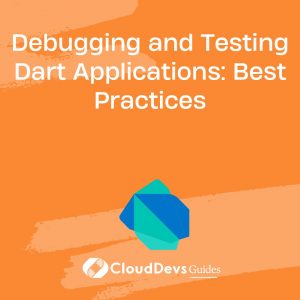Hiring Dart Developers: A Comprehensive Interview Questions Guide
In the realm of modern programming languages, Dart has emerged as a versatile and powerful language known for its use in building web and mobile applications. To navigate the process of hiring Dart developers effectively, this guide equips you with essential interview questions and strategies to identify top-tier candidates with the technical expertise, problem-solving acumen, and Dart proficiency your team requires.
Table of Contents
1. How to Hire Dart Developers
Begin your journey of hiring Dart developers with these strategic steps:
- Job Requirements: Define specific job prerequisites outlining the desired skills and experience for your Dart development role.
- Search Channels: Utilize job boards, online platforms, and developer communities to discover potential Dart developer candidates.
- Screening: Evaluate candidates based on their Dart proficiency, web or mobile development skills, and supplementary knowledge.
- Technical Assessment: Develop a comprehensive technical evaluation to assess candidates’ coding abilities, understanding of Dart’s syntax, and problem-solving capabilities.
2. Key Skills to Look for in Dart Developers
When evaluating Dart developers, prioritize these core skills:
- Dart Proficiency: A strong grasp of Dart programming language features, syntax, and conventions for building efficient and scalable applications.
- Web or Mobile Development: Proficiency in web or mobile app development, including experience with relevant frameworks like Flutter for mobile app development.
- Object-Oriented Programming: Expertise in object-oriented programming principles, encapsulation, inheritance, and polymorphism in Dart. A
- PI Integration: Familiarity with integrating APIs and services into Dart applications for data retrieval, manipulation, and interaction.
- Version Control: Proficiency in using version control systems like Git to collaborate effectively with team members on codebases.
3. Dart Developer Hiring Process Overview
Here’s a high-level overview of the Dart developer hiring process:
3.1 Define Job Requirements and Skillsets
Lay a strong foundation by outlining clear job requirements, specifying the skills and experience you’re seeking in Dart developer candidates.
3.2 Craft Compelling Job Descriptions
Create engaging job descriptions that accurately convey the responsibilities and opportunities associated with the Dart development role.
3.3 Develop Dart Developer Interview Questions
Design a comprehensive set of interview questions covering Dart intricacies, web or mobile development concepts, Dart frameworks, and problem-solving techniques.
4. Sample Dart Developer Interview Questions and Answers
Explore these sample questions and answers to assess candidates’ Dart skills:
Q1. Explain the purpose of the Dart language. How does Dart stand out as a language for web and mobile development?
A: Dart is a versatile programming language developed by Google, known for its performance and productivity in building web and mobile applications. It’s used in conjunction with frameworks like Flutter for building native apps across platforms and web applications using technologies like AngularDart.
Q2. Describe the key features of Dart that facilitate building web and mobile applications.
A: Dart features a concise syntax, strong typing, a virtual machine for execution, support for asynchronous programming using futures and async/await, and a comprehensive standard library. It’s also known for its “hot reload” feature in Flutter for rapid development.
Q3. Implement a Dart function that calculates the factorial of a given positive integer using recursion.
int factorial(int n) {
if (n <= 1) {
return 1;
}
return n * factorial(n - 1);
}
Q4. Explain the concept of asynchronous programming in Dart. How can you use futures and async/await to handle asynchronous tasks?
A: Asynchronous programming in Dart allows non-blocking execution of tasks. Futures represent a value or error that will be available at some point, while async/await simplifies the syntax for writing asynchronous code, making it look similar to synchronous code.
Q5. What is Dart’s type system, and how does it handle type annotations?
A: Dart has a strong, static type system. Type annotations are used to declare the types of variables, function return values, and parameters. They help catch type-related errors during compilation.
void main() {
String name = "John";
int age = 30;
print("My name is $name and I'm $age years old.");
}
Q6: Explain the difference between final and const variables in Dart.
A: final variables can only be assigned once and their value is determined at runtime. const variables, on the other hand, must have a constant value at compile-time and can be used for things like numbers, strings, or instances of classes with const constructors.
void main() {
final cityName = "New York";
const piValue = 3.14159;
print("City: $cityName");
print("Pi: $piValue");
}
Q7. What are Dart packages? How can you use and manage packages in Dart applications?
A: Dart packages are collections of libraries, assets, and other resources that provide specific functionalities. You can use packages from the Dart package repository (pub.dev) by adding them to your project’s pubspec.yaml file and running “pub get” to fetch dependencies.
Q8. How does Dart handle asynchronous programming? Explain the role of Future and async/await.
A: Dart uses Futures for handling asynchronous operations. Future represents a potential value or error that will be available at some point. The async keyword marks a function as asynchronous, and await is used to pause execution until a Future completes.
void main() async {
String result = await fetchData();
print("Data fetched: $result");
}
Future<String> fetchData() async {
await Future.delayed(Duration(seconds: 2));
return "Hello from the Future!";
}
Q9: Describe the purpose of Dart’s Iterable and List types. Provide an example of working with them.
A: An Iterable is a collection of elements that can be accessed sequentially. A List is a commonly used type that implements Iterable and represents an ordered collection of items.
void main() {
List<String> fruits = ["Apple", "Banana", "Orange"];
print("Fruits:");
for (String fruit in fruits) {
print(fruit);
}
}
Q10: How can you handle exceptions in Dart? Explain the purpose of try, catch, and on clauses.
A: In Dart, you can handle exceptions using try, catch, and optional on clauses. try encloses code that might throw an exception, catch specifies how to handle exceptions, and on is used to catch specific exception types.
void main() {
try {
int result = 10 ~/ 0; // Division by zero
print("Result: $result");
} catch (e, s) {
print("An error occurred: $e");
print("Stack trace: $s");
}
}
5. Hiring Dart Developers through CloudDevs
Step 1: Connect with CloudDevs: Initiate a conversation with a CloudDevs consultant to discuss your Dart development project’s specifics, preferred skills, and desired experience levels.
Step 2: Identify the Ideal Match: Within a short timeframe, CloudDevs presents you with carefully selected Dart developers from their network of pre-vetted professionals. Review their profiles and select the candidate whose expertise aligns seamlessly with your project’s vision.
Step 3: Begin a Trial Engagement: Engage in discussions with your chosen developer to ensure a smooth integration into your team. Once satisfied, formalize the collaboration and embark on a risk-free trial period spanning one week.
By leveraging the expertise of CloudDevs, you can seamlessly identify and hire top-tier Dart developers, ensuring your team possesses the skills necessary to craft remarkable web and mobile applications.
6.Conclusion
Armed with these comprehensive interview questions and insights, you’re well-prepared to assess Dart developers comprehensively. Whether you’re developing web applications or cross-platform mobile apps, securing the right Dart developers through CloudDevs is pivotal for the success of your programming projects.
Table of Contents







